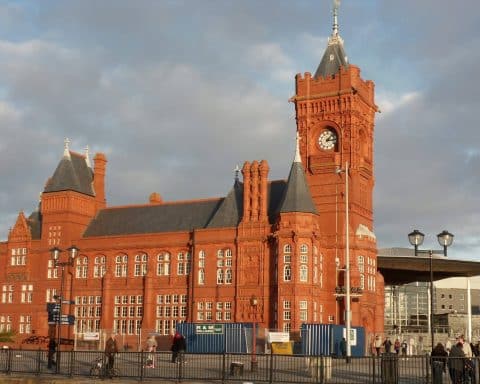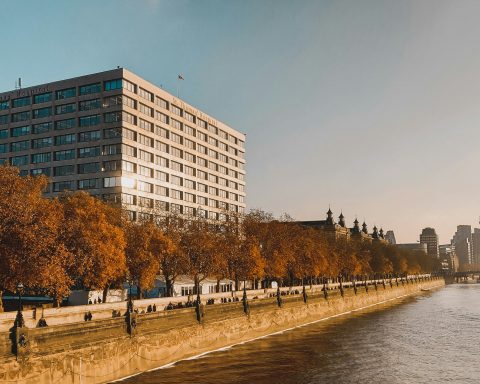John Havard is a GP in Suffolk
Tim Reed is a GP in Ipswich
Lucy Havard is a medical registrar in Cambridge
General Practice has been diluted by demand and lost all flavour. Young doctors have no taste for it and, with the NHS in free-fall, we need to now undertake some fundamental changes. It seems to us that patients want the same elements as their GPs, namely:
- Continuity of personalised care
- Time to spend together to develop trust
- Local urgent care
- Local GPs available out of hours
- Short A&E waiting times
Time for a ‘stiff drink’ metaphor – The Gin
Let us analyse this complex issue using a ‘Gin & Tonic’ metaphor. The gin is the essence of this NHS cocktail which derives from increased demand. This demand may be due partially to better access to information (about services and about worrying potential diagnoses) and loss of local extended families (informal sources of wisdom and support). Patients now contact the GP three times more often than they used to. NHS England reported an increase of 36 million GP appointments between the 12 months prior to July 2019 and the 12 months prior to July 2022.1 The days of a single GP receptionist taking all the calls and managing the waiting room are giving way to a call centre of care navigators.
NHS England reported an increase of 36 million GP appointments between the 12 months prior to July 2019 and the 12 months prior to July 2022.
Unsurprisingly, there are not enough actual appointments to go round, and so primary care work spills out of General Practice. ’111′ and contracted Out of Hours (OOH) providers absorb this work but are use safety-focused algorithms which err on the side of caution. This results in unnecessarily heavy loads on the Ambulance Service and Accident & Emergency (A&E). More A&E cases put hospitals under greater pressure, stretching already limited resources and paradoxically compromising the safety of the service. And hospitals and A&Es under pressure struggle to receive emergency and non-emergency work that is referred by clinicians dealing with patients in the community.
This is a picture of the downstream NHS flood that requires an upstream solution. However, the NHS has opened a plethora of expensive alternatives. For example, the National Office of Statistics estimated the cost of Out-of-hours GP services in 2013-14 as being £400 million.2 The patient journey journey progressess from ‘111’ to walk-in centres, urgent treatment centres, minor injury units and GPs in A&E. These miss the point of locally staffed primary care with GPs as gatekeepers. Staffing these alternatives is expensive in itself before adding the costs of a defensive attitude to practice that fosters frequent onward referral. In Oxfordshire, it was found that primary care physicians who did not work in local practices referred 57% more often than those who did work locally.3 In 2004, OOH was taken back by PCTs and the hours were priced up as worth £6000 per GP.4 The cheapest contacts were secured and GP co-operatives usually lost out to private companies. Locums, frequently with no knowledge of the patient or area services, understandably referred significantly more patients to hospital than local GPs who were more inclined to keep them at home with an appropriate follow-up plan.3
Time for the tonic
The social and financial benefits of good general practice are massive and well proven. Strong relationships with local GPs have been shown to reduce admissions to hospital and even prevent death. A bold statement backed by a research study in Norway – not of a few thousand patients but over 4.5 million, which is almost the total population!5
We need to develop new community practices, building on the flexible, innovative and cost-effective character of GP Surgeries. These natural units of human-scale service delivery are familiar to patients. They will develop into new community practices where all primary, community and social care staff work together as a single simplified organisation under one roof with the same software. Staff will work exclusively with the practice patient list as independent wholly subcontracted organisations. This small clinical team coordinates care, acts as gatekeeper and manages a range of conditions in the community with support of specialists if required.
Many services provided by hospitals, paramedics and 111 could be delivered by the practice using the relationship-based and cost-effective model traditionally used by family doctors. Community services delivered by the practice could include mental health support, phlebotomy, district nurses, health visitors, social care and so on.
Services functioning on a larger scale, such as OOH, urgent care, and various diagnostics including endoscopy are provided by a community hub – a not-for-profit organisation of the community practices.
We need to offer improved pay, better working conditions and replicate secondary care’s expansion over the past 30 years by massive increase in staff who want to stay.6 Many NHS and social care staff are currently suffering from burn-out with little faith in the current model or NHS leadership – any new plan must make clinical sense and give hope.7 This strategy needs support at the highest level and a detailed implementation plan devised jointly with staff across the system. Governance needs to be ‘bottoms up’ (consistent with cocktail analogy!) and not ‘top down’ as it is currently.
We’ll have more fizz in that hospitals become referral destinations only for patients that really need high-tech, resource intense, expensive care. A&E savings would be immense and waiting times for referrals and emergencies reasonable again! A&E Minors would not exist and A&E would be allowed to fulfil the role for which it was initially intended – to deal with accidents and emergencies only.
Existing privately owned GP premises would be sold, and new premises would be owned by the Integrated Care Board or another structure of their choosing – but not GPs. Nye Bevan wrote in the British Medical Journal on the inauguration day of the NHS:
My job is to give you facilities, resources, apparatus and all the help I can, and then leave you alone as professional men and women to use your skill and judgement without hindrance.8
We think this new model can turn the tide. NHS staff need to be re-enthused and allowed to focus on patient care within mutually supporting teams. We should strive to make general practice more of a vocation again and less of a ‘job’.
NHS staff need to be re-enthused and allowed to focus on patient care within mutually supporting teams. We should strive to make general practice more of a vocation again and less of a ‘job’.
So, what about the cost of modernising the Primary Care Estate along these lines? A substantial new build for a 20,000 patient Practice would cost approximately £6-7million.9 However, there will be savings on notional rent from current premises. It is also worth putting these figures in perspective: across East Suffolk and North Essex Foundation Trust £150 million is being invested in secondary care building projects.10
And finally, a twist of lemon… bitter for some
If we do distil the essence of General Practice with small lists combined with more community care, then we should be able to take back 24-hour responsibility. This would be a difficult sell to current GPs but the GP authors have both worked with the current system and the nights and weekends of old. Paradoxically we found that the old system was much more relaxed, despite the night work, compared to the intensity and complexity of today. The continuity of care is the star attraction for both patients and GPs. We have already outlined how this plan would save a the UK fortune. This all might sound radical, but it really amounts to distilling out the elements that really count and investing properly so we can be proud again of our National Health Service. we think it would enhance GP job satisfaction immeasurably.
It is time now for all NHS leaders to step up to the plate and right the wrong of chronic misplaced primary care underfunding. Such investments will yield massive dividends and halt the GP recruitment crisis. The workload will be much more appealing to the bright new GPs of tomorrow. Re-allocating the money from 111, UTCs, OOH, and walk-in centres back into general practice allows a new cost-effective model to emerge rather than a patched up and poorly repaired old one. Primary care is rightly called the ‘Bedrock of the NHS.’ It deals with around 90% of patient contacts for under 10% of the national budget.11 We now need a national movement for change to save the NHS. As Nye Bevan reportedly said:
[The NHS] will last as long as there are folk left with the faith to fight for it.12
Time to restore the strength and spirit of General Practice. Good health.
References
- NHS England, ‘Access to Primary Care’, October 2022, accessed 3 November 2023, https://www.england.nhs.uk/wp-content/uploads/2022/10/item-6-public-board-meeting-access-to-primary-care-revised.pdf.
- National Audit Office, ‘Out-of-hours GP services in England’, September 2014, accessed 3 November 2023, https://www.nao.org.uk/wp-content/uploads/2014/09/Out-of-hours-GP-services-in-England1.pdf.
- Lasserson D, Smith H, Garland S, Hunt H, Hayward G. ‘Variation in referral rates to emergency departments and inpatient services from a GP out of hours service and the potential impact of alternative staffing models’, Emerg Med J. 2021 Oct; 38(10):784-788.
- House of Commons Health Committee, ‘GP Out-of-Hours Services’, 2004, 4, accessed 3 November 2023, https://publications.parliament.uk/pa/cm200304/cmselect/cmhealth/697/697.pdf.
- Sandvik H et al., ‘Continuity in General Practice as Predictor of Mortality, Acute Hospitalisation, and Use of out-of-Hours Care: A Registry-Based Observational Study in Norway’, British Journal of General Practice 72, no. 715 (1 February 2022): e84, https://doi.org/10.3399/BJGP.2021.0340.
- https://www.rcgp.org.uk/getmedia/155e72a9-47b9-4fdd-a322-efc7d2c1deb4/retaining-gp-workforce-report.pdf
- Patient UK, ‘Burnout in Primary Care’, May 2023, accessed 3 November 2023, https://patient.info/doctor/burnout-in-primary-care#ref-1.
- Aneurin Bevan, ‘A Message to the Medical Profession from the Minister of Health’, British Medical Journal (3 July 1948): 4565.
- See https://www.gpbusiness.co.uk/article/1303163/building-new-gp-surgery-premises and https://www.aecom.com/without-limits/wp-content/uploads/2018/04/Health_Primary-care_CM_FINAL.pdf (accessed 19/12/23)
- ESNEFT, ‘Building Work at Ipswich Hospital’, 2023, accessed 4 November 2023, https://www.esneft.nhs.uk/your-visit/information-for-visitors/building-work-at-ipswich-hospital/.
- Simon Hodes et al, ‘If General Practice Fails, The NHS Fails’, British Medical Journal, May 2021, accessed 3 November 2023, https://blogs.bmj.com/bmj/2021/05/14/if-general-practice-fails-the-nhs-fails/.
- Dr Ben White, ‘The Truth of Nye Bevan’s Words on the NHS’, The Guardian, 2 June 2017, accessed 4 November 2023, https://www.theguardian.com/politics/2017/jun/02/the-truth-of-nye-bevans-words-on-the-nhs.
Featured photo by Bjarne Vijfvinkel on Unsplash








